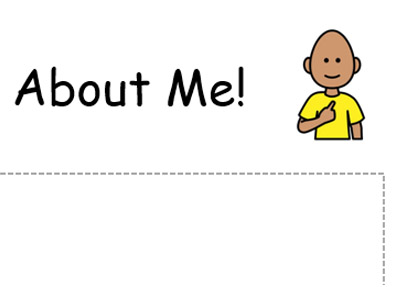The History of Personal Communication Passports
The first Personal Communication Passports were made by Sally Millar in 1991 as part of a CALL Scotland project, funded by the then Scottish Office Education Department.

Since then, Passports have been further developed at CALL Scotland, and are now made and used across Scotland, the UK and worldwide, by families, therapists, education and social work staff, voluntary agencies. They are now recognised as an indicator of good practice in transition planning, partnership with families, multi-agency collaboration, accessible information and more.
Who are Passports for?
Spanning all age-groups and different types of disability, Passports can be valuable for individuals with any kind of support needs, especially communication difficulties, and/or who experience barriers to independent self-expression.
For example:
- Individuals whose communication is at a very early stage of development, individuals who are non-speaking, minimally speaking, have inconsistent or unreliable speech or whose speech is unclear or difficult to understand or interpret.
- Individuals who use Augmentative and Alternative Communication (AAC) systems, including those who are not yet fully independent or proficient in their method(s) of communication.
- Individuals facing transitions from one setting or service to another.
- Individuals in any settings who come into contact with large numbers of people (whether family, friends, support staff or professionals), where communication and coordination between them is not easily achieved (and especially where there is a rapid turnover of staff or temporary or untrained staff).
- People who need to access services in the community (e.g. care or medical services, GP appointment) independently and who may need to ‘tell the same story’ to many different professionals and agencies.


Our social media sites - YouTube, Twitter and Facebook